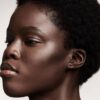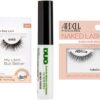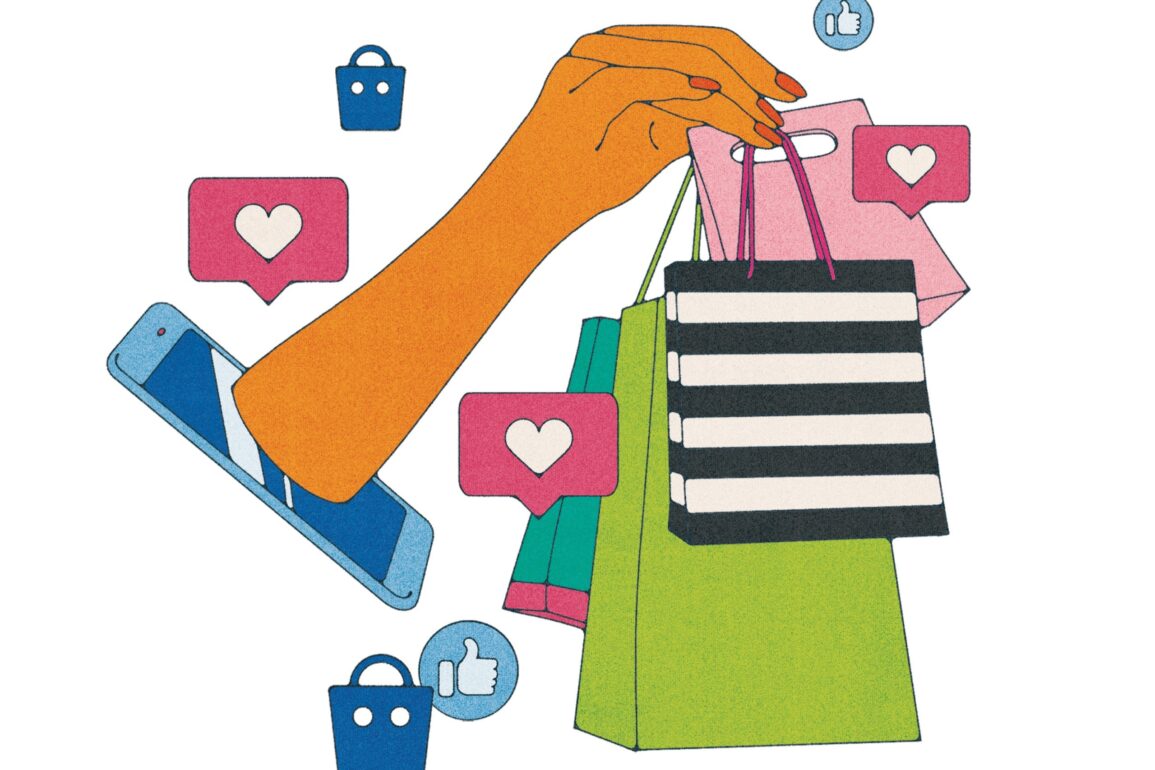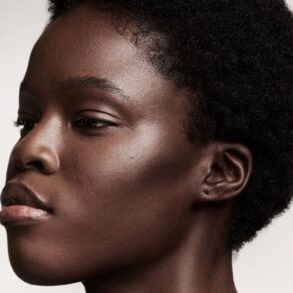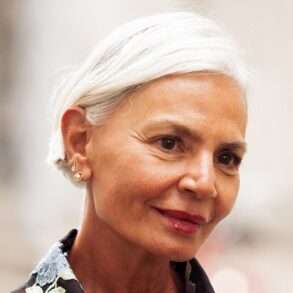How Glossier Made Effortlessness a Billion-Dollar Brand
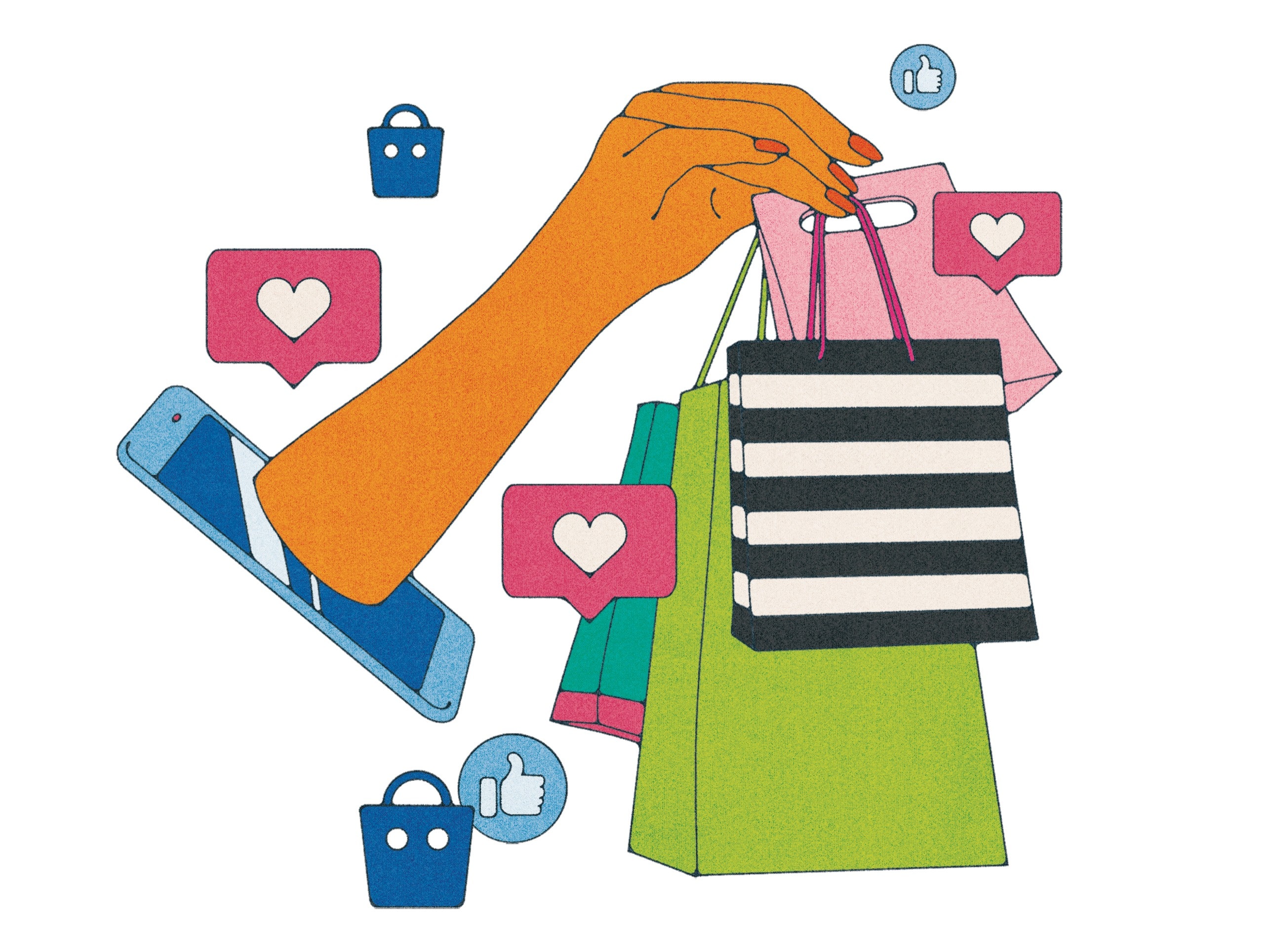
In 2010, Emily Weiss was working on a Vogue photo shoot in Miami when she and Doutzen Kroes got to talking about self-tanner. Weiss was, at the time, an assistant to a freelance stylist. Kroes was among the highest-paid models in the world, and (it emerged) a big fan of L’Oréal Sublime Bronze ProPerfect Salon Airbrush Self-Tanning Mist. “She was like, ‘All the other ones are crazy,’ ” Weiss later recalled. This one, Kroes insisted, was different—she said it didn’t even smell. Weiss picked up a bottle at the drugstore and was converted. She pitched a Vogue beauty editor and wrote up the recommendation, in what became her first byline for the magazine.
The episode contained, in miniature, the forces Weiss would harness in her career. There was the fast, casual intimacy of talking about beauty products—the conversations about lip gloss or deodorant that could make a bar bathroom (or a photo-shoot trailer) feel like a slumber party. There was the value of personal recommendations, which held up even when the person doing the recommending was perhaps not unbiased. Kroes was a L’Oréal “Ambassador”; getting people to buy such products as Sublime Bronze ProPerfect Salon Airbrush Self-Tanning Mist was her job. But Weiss wasn’t put off. An apparently heartfelt recommendation could inspire not just a purchase but some pro-bono promotional work, too.
Read our reviews of notable new fiction and nonfiction, updated every Wednesday.
Not long after the Miami photo shoot, Weiss started her own beauty Web site, Into the Gloss. Within five years, Into the Gloss had given rise to a beauty brand, Glossier; within a decade, Glossier was a billion-dollar business. Weiss is an exceptional success—“the last girlboss standing,” as Marisa Meltzer writes in “Glossy” (One Signal), a new book on Weiss and her company. But Weiss is also just one of many young people to seek a fortune on the basis of personality, social-media savvy, and the promise of authenticity. She operated in the realm of the startup; others’ ambitions played out amid the “creator economy”—land of Instagram influencers, YouTubers, TikTokers, and more. “There is a sort of parallel universe where Weiss became an influencer instead of a CEO,” Meltzer recalls thinking during one of their interviews. “I would be at the Valentino dinner right now,” Weiss says when Meltzer mentions the idea, then laughs—in relief, Meltzer thinks.
Weiss grew up amid the bland affluence of Connecticut, where a precocious interest in fashion set her apart from the mall-prep aesthetic that prevailed locally. In her senior yearbook, she was, Meltzer notes, voted not “Best Dressed” but, rather, “Most Likely to Be Famous.” Two qualities that worked in her favor were her beauty (she was an occasional model for Seventeen) and her self-possessed ambition. As a teen-ager, she talked her way into an internship at Ralph Lauren after babysitting for a neighbor who worked at the company. Her boss at Ralph Lauren put her up for an internship at Teen Vogue; her boss at Teen Vogue put her up for a role on “The Hills,” a reality show whose heroines held dubious internships at the magazine’s West Coast office. She appeared in three episodes in 2007, and, Meltzer writes, carried herself “like some kind of insanely confident apparition who has come to show the laconic and provincial stars of the show what working at a magazine really takes.” She could have been a villain but instead became a fan favorite.
Spinoffs have been spun from less. But, rather than pursue reality stardom, Weiss returned to New York to work in fashion and magazines. What she really wanted, she said at the time, was to become an editor-in-chief—an ambition just beginning to sound slightly old-fashioned. Style bloggers were already unsettling fashion-world hierarchies.
“Fashion was one of the first industries to recognize the usefulness of bloggers and social media power users,” Taylor Lorenz, a reporter at the Washington Post, notes in “Extremely Online” (Simon & Schuster), a book about the business of Internet fame. With sponsored posts and affiliate links, bloggers quickly began to demonstrate their promotional might, silencing whatever gripes had greeted their arrival in runway front rows. Weiss spent time in low-level magazine roles before spotting her opening: alongside all the blogs dedicated to personal style, why not one about beauty?
It was promising territory. Beauty, in the twenty-tens, became pop culture. Celebrities (Rihanna, Kylie Jenner) started going beyond ordinary endorsement deals and launching makeup lines of their own. Meanwhile, on YouTube, amateur makeup artists were becoming celebrities. Bathed in the glow of ring lights, they presented tutorials on elaborate techniques: contouring cheekbones, creating smoky eyes, effecting dramatic transformations. (An early hit by the YouTuber Michelle Phan demonstrated how to look like Barbie.) The makeup influencers launched makeup lines, and the occasional non-makeup influencer did, too. Beauty yielded new hobbies (ten-step Korean skin-care routines) and new startup success stories (Drunk Elephant). Traditionally, in the world of fashion media, covering beauty products held less glamour than covering clothes, but now beauty had arrived at the center of attention.
The column that earned Into the Gloss its following was called The Top Shelf. It started as a series of long, loosely edited interviews in which fashion-industry insiders catalogued their beauty routines. Expensive serums, drugstore lotions, toner from France, cream blush from Japan: lists of products were interwoven with the habit, happenstance, superstition, and experimentation that make up the private logic of grooming. The result married the appeal of service journalism and voyeurism. Weiss’s initial subjects were stylists, agents, and editors; as the site grew, though, celebrities began to appear, including the new crop of fashion and beauty influencers. “Initially, my YouTube channel wasn’t just about makeup,” Phan told Weiss in her Top Shelf interview. “But beauty was the first topic that really resonated with the majority of my viewers because every girl can benefit from a beauty tip.”
For the earliest installments of The Top Shelf, Weiss brought a camera to document subjects’ homes. The still-lifes that resulted—nonchalant bouquets of makeup brushes, perfectly unmade bedside tables—crystallized an aesthetic that would soon become familiar on Instagram. The photo-sharing app got its start in 2010, just as Weiss was launching Into the Gloss, and offered a similar experience: the pleasure of peeking behind closed doors, an imagined intimacy with beautiful people, along with a tantalizing consumer itch. Spending two hundred dollars on a moisturizer seems a lot more plausible once you’ve seen a jar in someone else’s medicine cabinet.
Instagram took a while to decide how this potential ought to be channelled. Lorenz’s book documents the ways that different platforms did and didn’t accommodate users who hoped to make a living posting content: YouTube, for example, was quick to start a partnership program for sharing advertising revenue. From the beginning, Instagram’s approach to commerce on the app was ambivalent. “Instagram was not supposed to be about obvious self-promotion,” Kevin Systrom, one of the founders, said in 2012. He didn’t want advertising to disturb the app’s pristine visual world, and even after its acquisition by Facebook, that year, Instagram avoided running ads. When the company eventually rolled out plans to do so, executives pointed to Vogue—fat with sumptuous ads—as its model. Instagram’s first advertisement, for Michael Kors, appeared in 2013 and aimed for the midpoint between magazine spreads and emergent social-media tropes: a sharply rendered gold pavé watch, yes, but alongside a plate of pastel macarons.
Yet, even before the app officially welcomed advertising, work-arounds had taken hold. Fashion bloggers had flocked to Instagram, bringing along their brand deals. The platform had discouraged “obvious” promotional content and cleared the way for a subtler, wilier alternative: influencer recommendations that, though paid, weren’t labelled as such—which, in the eyes of brands, made them only more valuable. As Lorenz explains, “Because Systrom had meticulously avoided making Instagram a billboard from day one, it was now a platform where self-promotion and stealth ads were the dominant currency.” It was a platform for ads that didn’t look like ads, and it would become the perfect place to sell makeup that didn’t look like makeup.
By 2013, Into the Gloss was reporting 8.5 million page views per month. An ardent readership congregated in the comment sections, comparing notes on products and suggesting topics for future posts. Weiss was poised to expand, but how? In early meetings with potential V.C. funders, Meltzer says, Weiss floated such possibilities as social networking, e-commerce, or building out a broader publication.
Kim Kardashian once described her own social-media following as a “free focus group.” Weiss’s time at Into the Gloss had given her something similar. “She had been sitting in bathrooms since 2010, listening to women talk about products,” Meltzer writes. “What if a beauty brand did that?” The community fostered by Into the Gloss converted readily into customers.
Glossier, pronounced like “dossier,” débuted in October, 2014, with a collection of four products: Priming Moisturizer, Balm Dotcom (a salve), Soothing Face Mist (a rose-water spray), and Perfecting Skin Tint (a sheer foundation). The company made an immediate splash, despite its wares being—as Meltzer recalls thinking at the time—a little underwhelming. What Glossier had in place of distinctive products was a distinctive brand. This encompassed cute packaging but also an attitude. “Skin first, makeup second, smile always” was one company tagline; “You look good” was another. Glossier sold the fantasy of You but better, effortlessly. If posting to Instagram was a matter of pretending that a camera happened to catch you living a beautiful life, Glossier was the makeup to match.
Glossier’s positivity owed something to Dove’s “Real Beauty” campaign, which began in 2005 and used pointedly imperfect “real” women instead of models. “A new definition of beauty will free women from self-doubt and encourage them to embrace their real beauty,” Dove wrote in a statement accompanying the ads. But, where Dove was earnest, Glossier was playful and stylish, and its style owed much to Clinique, a brand that the Estée Lauder company introduced in 1968. Its saleswomen wore fresh white lab coats, and its packages were a vernal pale green. (Carol Phillips, a former Vogue editor hired to run the brand, sent notes in Clinique-green ink.) The stark, elegant product photographs that Irving Penn shot for Clinique in its early years appeared in Glossier’s internal file of inspiration images, Meltzer writes.
The “Glossier Girl” was conjured through the magic of social media. The brand cast models from Instagram—Glossier staffers, in their pursuit of faces that were both sufficiently “real” and sufficiently beautiful, learned to browse the photos in which a user was tagged, rather than the ones she posted of herself. The look that came to be associated with the brand included full, natural brows, flushed cheeks, and shiny skin. Fans tagged the brand in their flushed, shiny selfies; they tagged the muted pale pink of its branding (“#glossierpink”) in photos of sunsets or rose quartz. As the line expanded, names for products—such as Haloscope, a highlighter, or Boy Brow, a pomade—were chosen with hashtags in mind. The brick-and-mortar stores Glossier began opening were designed to be photographed and posted on Instagram.
“The user was the ad,” Meltzer writes. “Glossier crowdsourced so much of its imagery that they elevated their eager customer base to the (unpaid) position of campaign face.” Countless “shelfies” (Top Shelf selfies) documented users’ fondness for their purchases. At one point, the company experimented with using particularly enthusiastic customers as sales representatives—trying to make the Glossier Girl “the new, extremely online Avon Lady,” as Meltzer puts it. But the program was short-lived, and customers appeared perfectly happy to promote Glossier free of compensation. Even on Glossier’s own Instagram profile, commerce remained oblique. “Their page was never product, product, product,” Eva Chen, a magazine editor who left Condé Nast to become Instagram’s director of fashion partnerships, tells Meltzer. Instead, it was nineties fashion shoots, puppies, beautiful bathrooms—and lots of pink.
Glossier’s signature color transcended the brand; it came to be associated with Instagram as a whole. “Instagram favored a hyper-aspirational aesthetic,” Lorenz writes, describing the style that by 2017 dominated the app. “This aesthetic was defined by one color: Millennial pink. . . . Millennial-pink everything, all with a carefully staged, color-corrected, glossy-looking aesthetic.” What started as a breezy alternative to conventional fashion imagery had developed codes of its own. Barefaced beauty meant less pressure to apply makeup and more pressure to look good without any. A former Glossier employee tells Meltzer, “They are selling a concealer for people who don’t have pimples.”
Weiss herself was not exempt from the strenuous discipline of “effortlessness.” In 2016, she got married (briefly, to the photographer Diego Dueñas) and wrote a post for Into the Gloss describing her pre-wedding beauty regimen: a months-long process that included a cleanse, a trainer, colonics, microcurrent facials, and eyelash extensions. At the end of all this, Weiss wrote, “I was 8/10 happy with how I looked . . . pretty good!” This was not so long after a Glossier ad told customers, “Brush your teeth, brush your brows, and then maybe brush your hair.”
Glossier was reaching the height of its success at what Lorenz identifies as “the Instagram aesthetic’s saturation point.” As the end of the decade approached, she says, “the gap between influencers’ super-professional posts and the everyday lives of most users grew too large.” The result was an appetite for more assertive flavors of online authenticity. Low-quality photos became a Gen Z fetish; messiness and “relatable” imperfection characterized the preferred social-media self-presentation of an audience that was coming into its buying power as Weiss’s cohort aged into retinol.
“If there was anyone who embodied this shift, it was Emma Chamberlain,” Lorenz writes. In a 2017 YouTube video that became her first hit, Chamberlain sits in her suburban bedroom with acne on her forehead and unpacks a bag of junk she’s just bought at the dollar store, rhapsodizing over her purchases—a “fashion scarf,” a recorder, “Frozen” Q-Tips—with facetious intensity. (Products as punch line: a sort of anti-Top Shelf.) “Nothing about Chamberlain’s videos looked ‘premium,’ ” Lorenz notes, “premium” being the grade of content traditionally desirable to advertisers. But the fashion industry embraced Chamberlain just as it had embraced fashion bloggers a decade before. Chamberlain now holds sponsorship deals with Louis Vuitton and Cartier, and, for the past several years, has served as Vogue’s red-carpet correspondent at the Met Gala.
The change in aesthetics coincided with a change in business practices. In 2017, the Federal Trade Commission sent letters to more than ninety Instagram influencers and marketers, seeking to “educate” them on their obligation to make “clear and conspicuous” disclosures of any payments or other material benefits provided in return for posts. The prospect of an F.T.C. crackdown seemed like an existential threat. “The whole point of sponsored content was to make it not look like an ad,” Lorenz writes. “Creators worried that revealing which brands were paying them would kill their authenticity, repelling their audience.”
There turned out to be nothing to worry about. Instagram implemented “Paid Partnership” labels, influencers added “#ad” to their hashtags, and followers were unperturbed. In some cases, engagement with sponsored posts appeared to increase. Influencers were emboldened: they took on more brand deals than ever. The no-makeup-makeup style of Instagram advertising—tastefully minimal, ideally undetectable—appeared obsolete. Now advertising could announce itself and did, sometimes even when technically nothing was being advertised. “By 2018, a brand deal had become a status symbol,” Lorenz writes. As one fifteen-year-old tells her, “People pretend to have brand deals to seem cool.” Aspiring influencers began posting fake sponsored content with captions in the now familiar cadence of social-media campaigns, complete with the label “#ad.” Brands like Glossier had strived to post like people; now people strove to post like brands.
In the introduction to “Glossy,” Meltzer describes a former Glossier employee worrying that the existence of a book about the company “implies a cooling-down of some nature.” The book’s subtitle—“Ambition, Beauty, and the Inside Story of Emily Weiss’s Glossier”—dangles the possibility of scandalous revelation. But the story it contains is less an exposé than a record of a passing Zeitgeist. Glossier has weathered its share of criticism, much of it enabled by the same social-media channels the company used so adroitly. In 2019, Glossier’s ill-fated Play line of color cosmetics inspired customer complaints for including non-biodegradable glitter. In 2020, an Instagram account called Outta the Gloss started sharing stories from former retail employees about the company’s shortcomings in racial equity and working conditions.
And yet Glossier carries on. In February, Sephora began stocking Glossier products. Wholesale was a development Weiss long resisted, because it meant giving up control of the customer experience—but it also put Glossier within easy reach of its customers, of whom many remain.
Meltzer, who previously profiled Weiss for Wired and Vanity Fair, serves as an authoritative guide to Glossier’s industry context and an astute analyst of the brand’s appeal. But the woman at the center of her story has always been guarded in her dealings with the press, and she gives the book only wary participation. The narrative is sprinkled with acknowledgments of subjects Weiss resisted discussing. The world of “Extremely Online”—in which the desire to command attention is the basis for entrepreneurship—is one in which Weiss both does and doesn’t belong. In Lorenz’s telling, reality television represents a threshold, a cultural phenomenon that enabled social media’s era of commodified personality. Weiss experienced this threshold firsthand and turned away.
Despite a fondness for tech-founder posturing and talk of innovation, Weiss appears in Meltzer’s portrait as a creature of media’s ancien régime, with her print connections and her exquisitely controlled bearing. The subtlety of her commercial strategy stands in contrast to the methods adopted by the denizens of “Extremely Online.” The founder of Fanjoy, a startup that produces merchandise for YouTubers, tells Lorenz that his clientele takes a “radically different” approach to selling products compared with “older, more traditional stars.” For example, Jake Paul (of Vine and, later, YouTube) recorded a holiday song called “All I Want for Christmas”; its chorus went, “Buy dat merch, buy dat merch, buy dat merch, buy dat merch, buy dat merch, buy dat merch, buy dat merch.”
“Glossy” and “Extremely Online” seem at times to adopt the habitual postures of their subjects’ milieus. Meltzer, as she negotiates Weiss’s reticence, shows a touch of the traditional women’s magazines’ sense of deference. “I was genuinely wondering if I was—and continue to be—to put it bluntly, a complete asshole for writing this book and for putting this woman I respect through such anxiety and turmoil,” Meltzer frets at one point. The default register of Lorenz’s book, meanwhile, is promotional—the language of press releases and marketing copy. An event is not merely the first but the “first ever”; newly reported information is a “shocking reveal.” An influencer posts photos of herself in outfits “featuring trendy garments and must-have accessories.” The “creators” who are Lorenz’s subjects make up “an unprecedentedly innovative community.”
“Extremely Online” closes with an exhortation to follow where those creators have led, issued by a writer who has taken up the cause of brand-building. “We should heed the lessons of the first twenty years of online life, and reflect those learnings in our work to build a better internet,” Lorenz writes. “In this we must all be creators, influencing the online world we inhabit.”
Plenty are willing. In a 2019 Morning Consult poll of people between the ages of thirteen and thirty-eight, eighty-six per cent of respondents said they would promote a product on their social-media channels for money, with twenty per cent saying that they’d do so even if they did not like the product in question. Eight-eighty per cent, meanwhile, said they valued influencers for that elusive quality: their authenticity. ♦
This post was originally published on this site be sure to check out more of their content.


